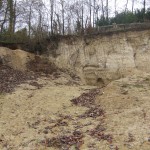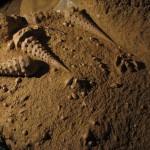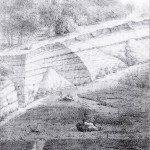Reasons for a name
The name “Lutetian” was coined by Albert Auguste de Lapparent, a French engineer introduced to geological mapping around 1860 by Jean-Baptiste Élie de Beaumont. In 1883 Lapparent published a Treatise of Geology where he revised the stratigraphic interval described as “Parisian” by Charles Lyell and Alcide d’Orbigny. Lapparent subdivided it into Lutetian, Bartonian, and Ligurian, equating the first with the Coarse Limestone Formation, first studied by Georges Cuvier and Alexandre Brongniart.
The name was chosen to honor the strata of the French Capital, built on the soft sediments where the catacombs had been excavated a century earlier, and whose fossils formed the basis for Jean-Baptiste Lamarck’s transmutational theory: Lutetia was the ancient name of Paris, and the Lutetian was the Parisian in the strict sense.
The Parisian groups all Eocene.—Having now given a rapid sketch of the different groups of the Paris basin, we may observe generally that they all belong to the Eocene epoch, although the entire series must doubtless have required an immense lapse of ages for its accumulation. The shells of the different fresh-water groups, constituting at once some of the lowest and uppermost members of the series, are nearly all referrible to the same species, and the discordance between the marine testacea of the calcaire grossier and the upper marine sands is very inconsiderable.Charles Lyell, 1833





